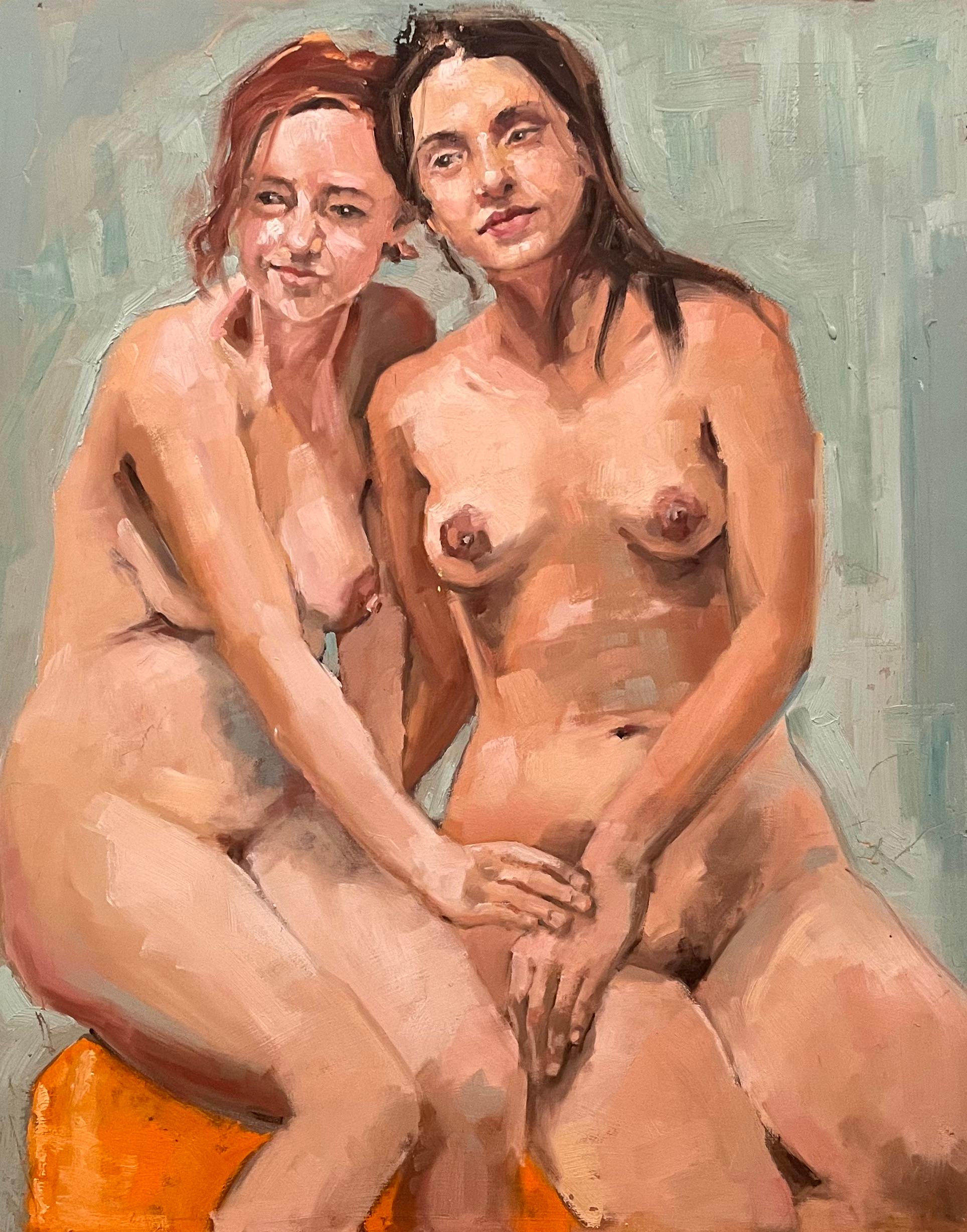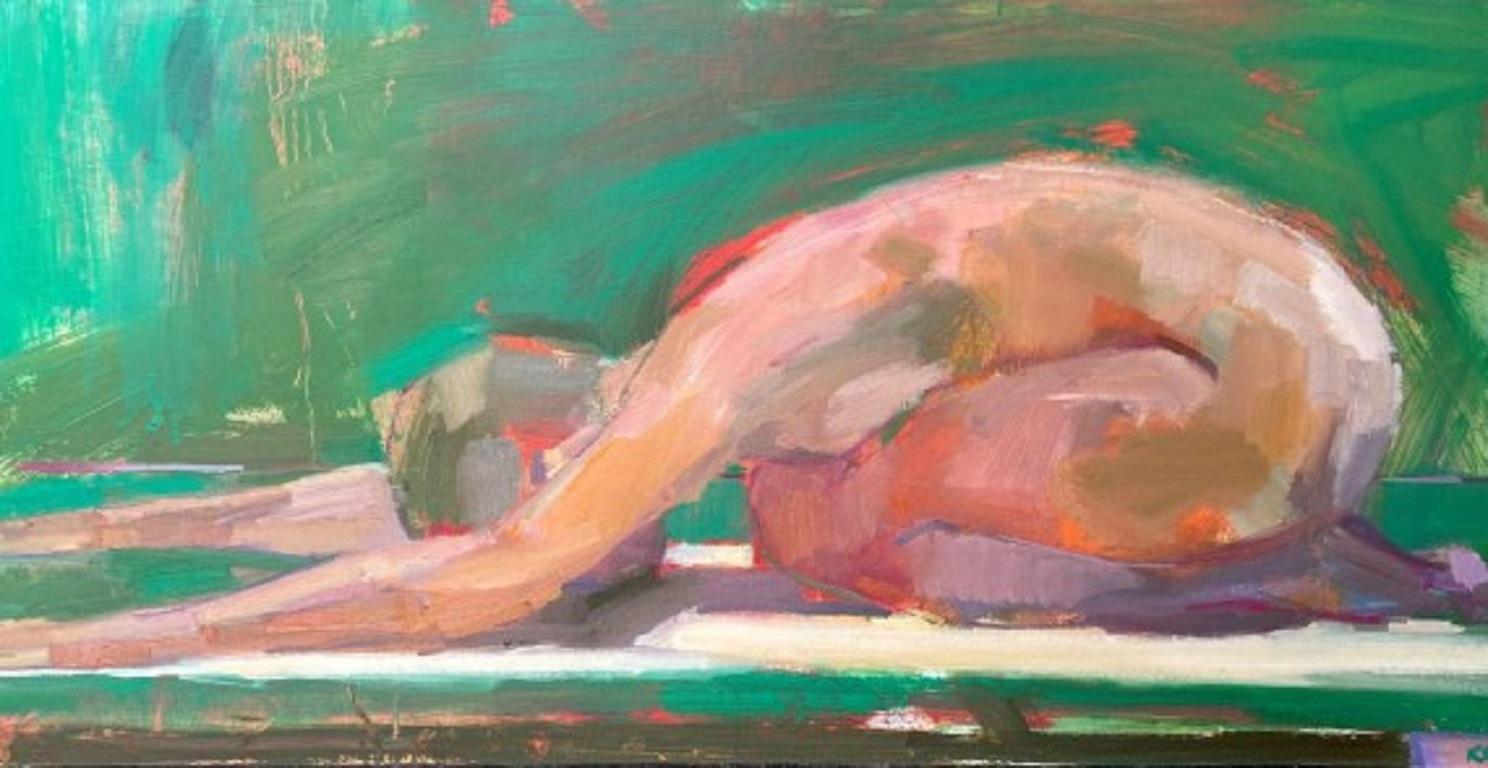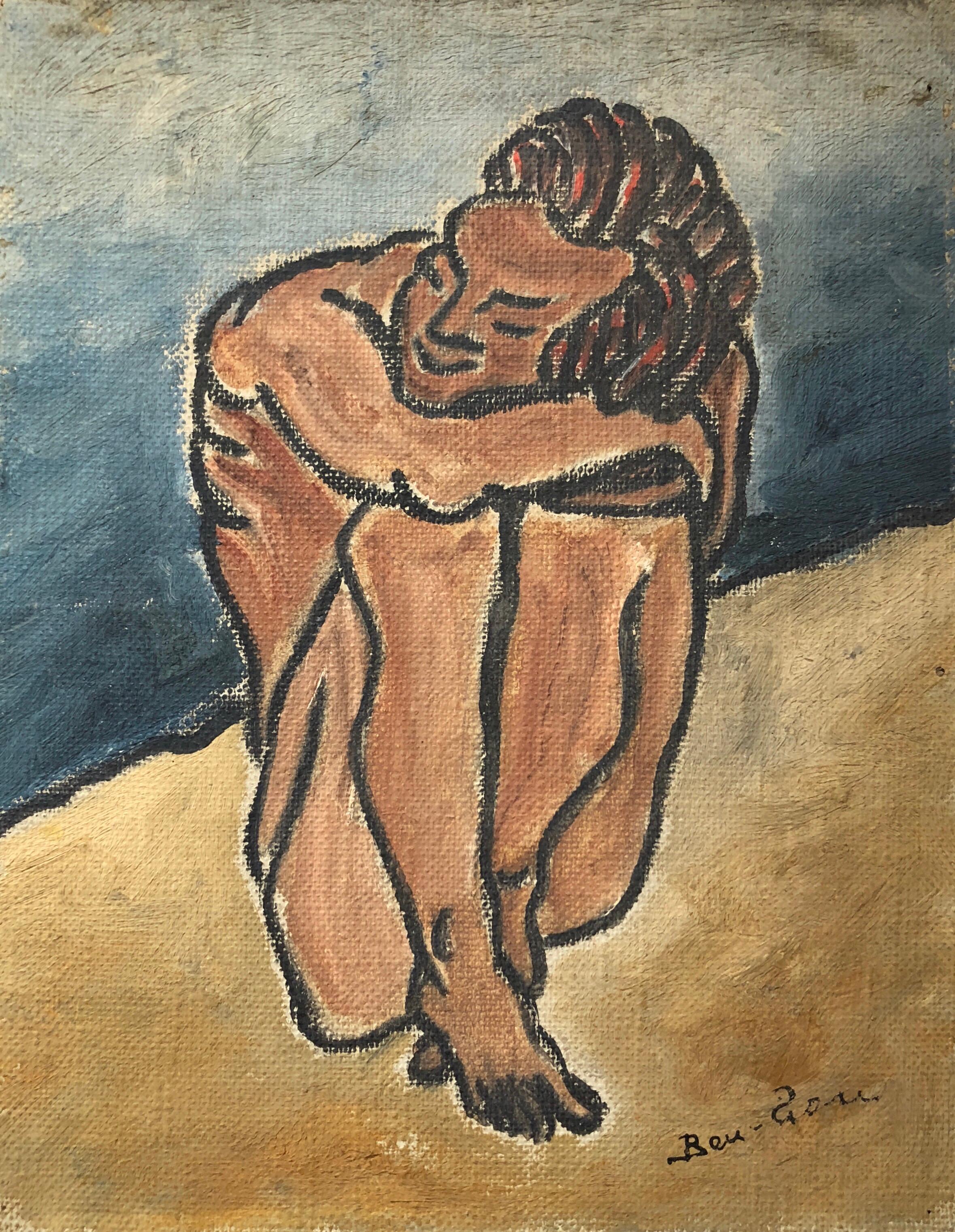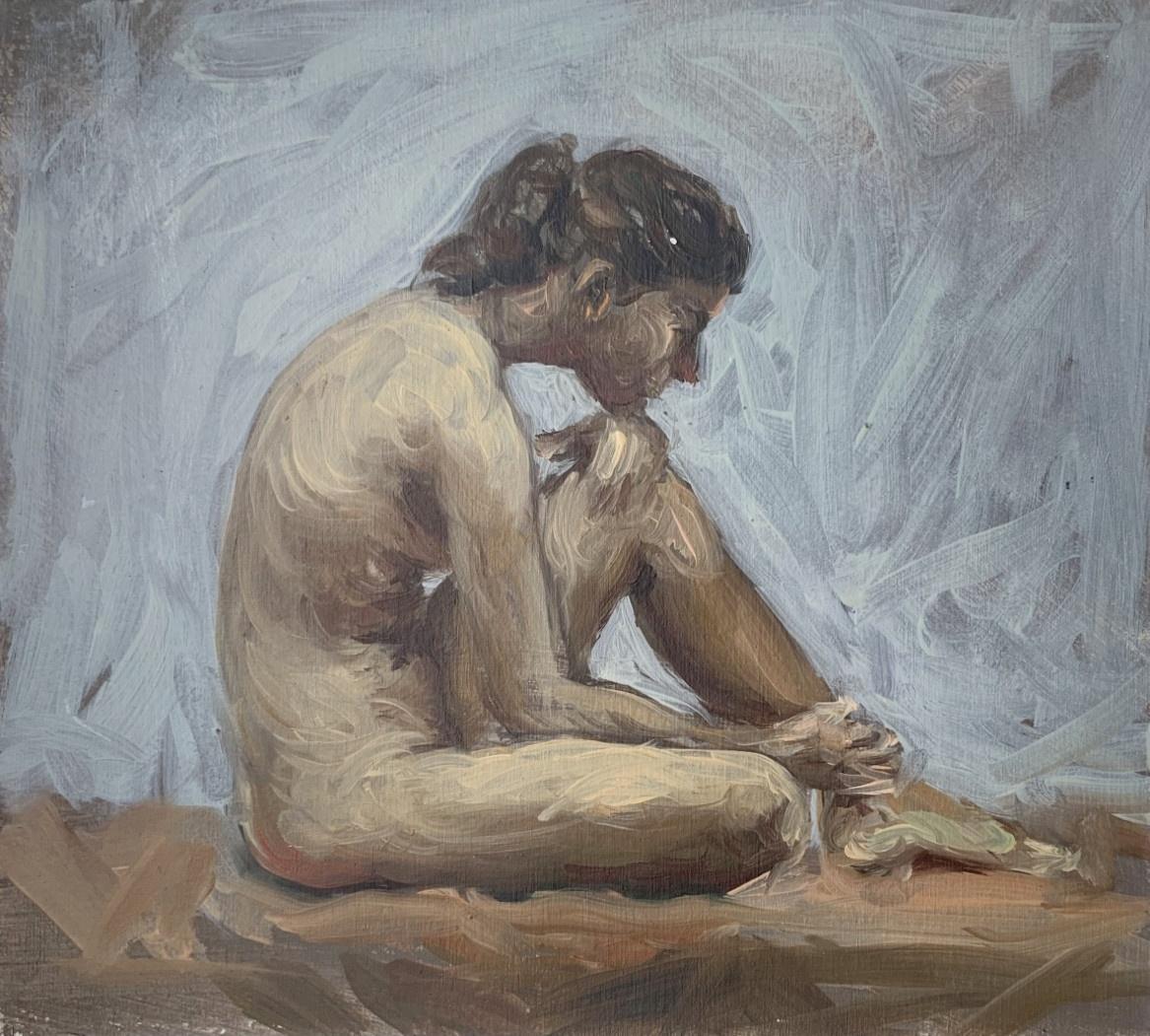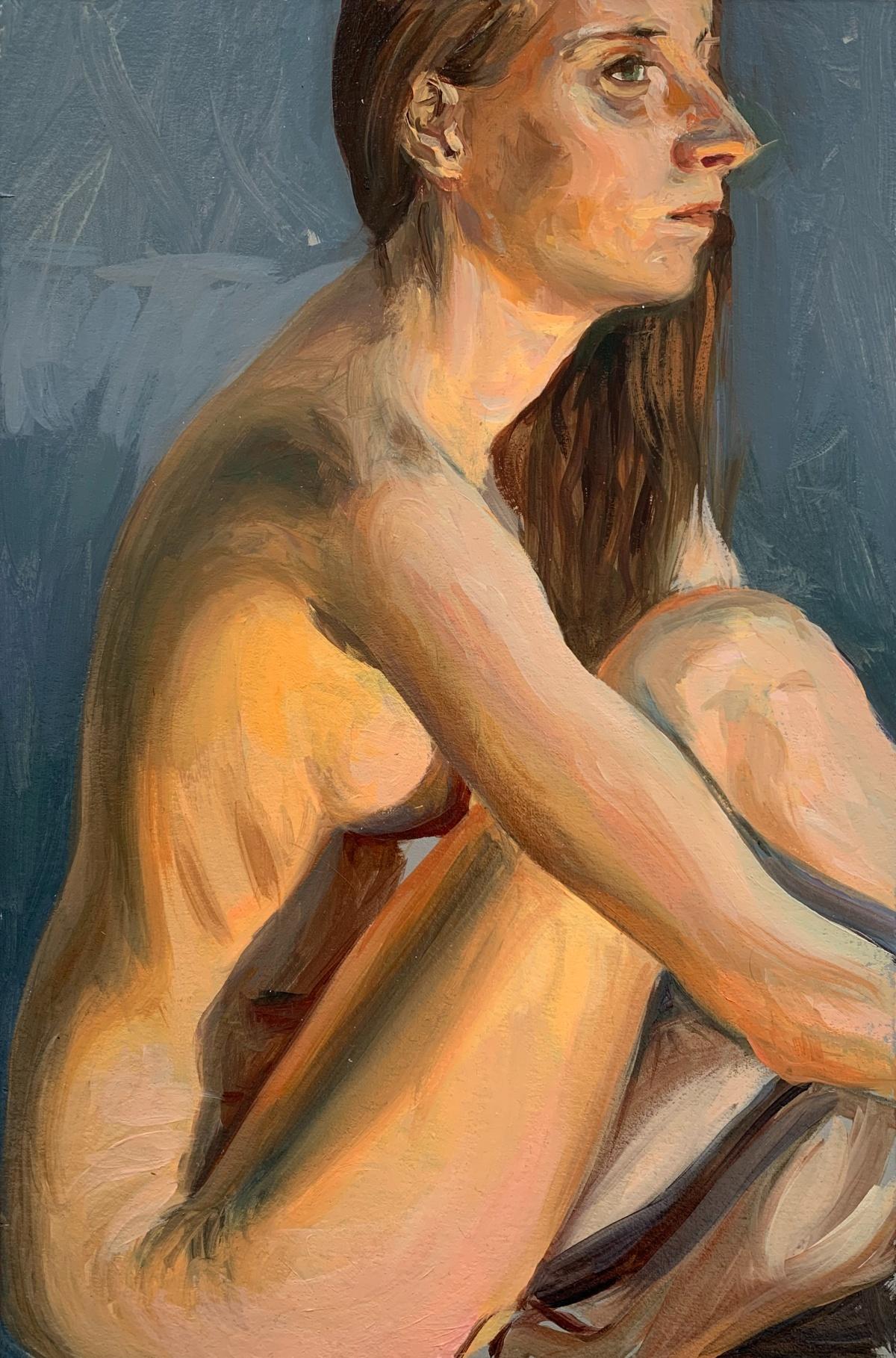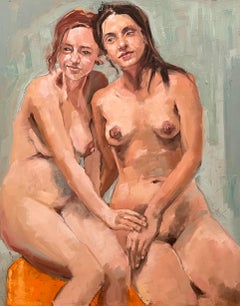Nandor Vagh Weinmann, Oil on cardboard, Naked Back, 1930s
View Similar Items
Want more images or videos?
Request additional images or videos from the seller
1 of 8
Nandor Vagh WeinmannNandor Vagh Weinmann, Oil on cardboard, Naked Back, 1930s1930s
1930s
Price:$2,800
About the Item
- Creator:Nandor Vagh Weinmann (1897 - 1978, Hungarian, French)
- Creation Year:1930s
- Dimensions:Height: 25.2 in (64 cm)Width: 22.05 in (56 cm)Depth: 2.17 in (5.5 cm)
- Medium:
- Movement & Style:
- Period:
- Condition:
- Gallery Location:Saint Amans des cots, FR
- Reference Number:1stDibs: LU1088214115642
About the Seller
5.0
Vetted Professional Seller
Every seller passes strict standards for authenticity and reliability
1stDibs seller since 2018
38 sales on 1stDibs
Authenticity Guarantee
In the unlikely event there’s an issue with an item’s authenticity, contact us within 1 year for a full refund. DetailsMoney-Back Guarantee
If your item is not as described, is damaged in transit, or does not arrive, contact us within 7 days for a full refund. Details24-Hour Cancellation
You have a 24-hour grace period in which to reconsider your purchase, with no questions asked.Vetted Professional Sellers
Our world-class sellers must adhere to strict standards for service and quality, maintaining the integrity of our listings.Price-Match Guarantee
If you find that a seller listed the same item for a lower price elsewhere, we’ll match it.Trusted Global Delivery
Our best-in-class carrier network provides specialized shipping options worldwide, including custom delivery.More From This Seller
View AllDream
Located in Saint Amans des cots, FR
Oil on canvas by Madé Gourdon, France, 1960s. "Dream". with frame: 70x61 cm - without frame: 55x46 cm. 10F format. Signed "Madé Gourdon" in the lower left. In its frame Montparnasse....
Category
1960s Expressionist Figurative Paintings
Materials
Canvas, Burlap, Oil
$2,800
Edouard Goerg, Les 3 Brunes, Large Oil on Canvas, 1955
By Edouard Goerg
Located in Saint Amans des cots, FR
Large oil on canvas by Edouard GOERG (1893-1969), France, 1955. LES 3 BRUNES. With frame : 114x95cm - 44.9x37.4 inches ; without frame : 92.2x73 cm - 36.3x28.75 inches. Format 30F. S...
Category
1950s Expressionist Figurative Paintings
Materials
Canvas, Oil
Bathers, Oil on Canvas, 1914
By Roger Grillon
Located in Saint Amans des cots, FR
Oil on canvas by Roger GRILLON (1881-1938), France, 1914. "Bathers". With frame: 114x94 cm - 44.9x37 inches ; without frame: 92x73cm - 36.2x28.75 inches. 30F format. Signed lower lef...
Category
1910s Impressionist Figurative Paintings
Materials
Canvas, Oil
Fernande Horovitz-Edwards, Bathers, Large Oil on Canvas, 1930s
Located in Saint Amans des cots, FR
Large Oil on Canvas by Fernande Horovitz-Edwards, France, 1930s - "Bathers". This large oil on canvas by Fernande Horovitz-Edwards, titled Bathers, dates from the 1930s and showcases...
Category
1930s Post-Impressionist Figurative Paintings
Materials
Canvas, Oil
YVES DIEY The Nude, Oil on canvas, 1930s
By Yves Diey
Located in Saint Amans des cots, FR
Oil on canvas by Yves Dieÿ (1892-1984), France – The Nude. A striking oil on canvas by the renowned French artist Yves Dieÿ (1892-1984), depicting a sensual and elegant nude. This wo...
Category
1930s Art Deco Nude Paintings
Materials
Canvas, Oil
R.B. FELTRAP, Oil on canvas, Nude, 1937
Located in Saint Amans des cots, FR
Oil on canvas signed R.B.FELTRAP, France, 1937. Nude. With frame : 101.5x82.5 cm - 40x32.5 inches ; without frame : 92x73 cm - 36.2x28.75 inches. Format 30F. Signed and dated "R.B.Fe...
Category
1930s Art Deco Figurative Paintings
Materials
Canvas, Oil
You May Also Like
Ecstatic Fatigue, abstracted female figure, nude
By Tom Bennett
Located in Brooklyn, NY
Oil on board. Abstracted, expressionist, figurative. Cool and warm greys with heightened color.
Category
2010s Expressionist Figurative Paintings
Materials
Oil, Board
"Nymphs" two voluptuous female nudes, gestural abstracted figures, clear colors
By Tom Bennett
Located in Brooklyn, NY
oil painting on board, an expressionist figurative homage to the work Diana and her Nymphs, by Rubens. Active, direct brushwork, flesh tones
Category
2010s Expressionist Figurative Paintings
Materials
Oil, Board
"The Lovers" by Shana Wilson - Nude Young Women in Intimate Figurative Painting
By Shana Wilson
Located in Carmel, CA
Shana Wilson (Canadian, born 1966)
"Lovers" 2014
Oil Paint, Board
The artist signed the back of the painting.
About the Artist:
Shana Wilson, born in Edmonton in 1966, has carved a ...
Category
2010s Expressionist Nude Paintings
Materials
Oil, Board
"A Soft Touch" by Shana Wilson - Intimate Figurative of Young Women Oil Painting
By Shana Wilson
Located in Carmel, CA
Shana Wilson (Canadian, born 1966)
"A Soft Touch" 2011
Oil Paint, Board
The artist signed the back of the painting.
About the Artist:
Shana Wilson, born in Edmonton in 1966, has car...
Category
2010s Expressionist Figurative Paintings
Materials
Oil, Board
Rosie Copeland, Child's Pose (After the Wave) , Original Nude Painting
By Rosie Copeland
Located in Deddington, GB
Rosie Copeland
Child’s Pose (after The Wave)
Original Nude Painting
Medium – Oil on board
Board Size: H 38cm x W 76cm x D 0.5cm
Sold Unframed
Please note that in situ images are pure...
Category
21st Century and Contemporary Expressionist Figurative Paintings
Materials
Oil, Board
American Modernist Oil Painting Nude Male on Beach WPA Artist Group of 10
By Ben-Zion Weinman
Located in Surfside, FL
Born in 1897, Ben-Zion Weinman celebrated his European Jewish heritage in his visual works as a sculptor, painter, and printmaker. Influenced by Spinoza, Knut Hamsun, and Wladyslaw Reymont, as well as Hebrew literature, Ben-Zion wrote poetry and essays that, like his visual work, attempt to reveal the deep “connection between man and the divine, and between man and earth.”
An emigrant from the Ukraine, he came to the US in 1920. He wrote fairy tales and poems in Hebrew under the name Benzion Weinman, but when he began painting he dropped his last name and hyphenated his first, saying an artist needed only one name.
Ben-Zion was a founding member of “The Ten: An Independent Group” The Ten” a 1930’s avant-garde group, Painted on anything handy. Ben-Zion often used cabinet...
Category
Mid-20th Century Expressionist Figurative Paintings
Materials
Oil, Board


